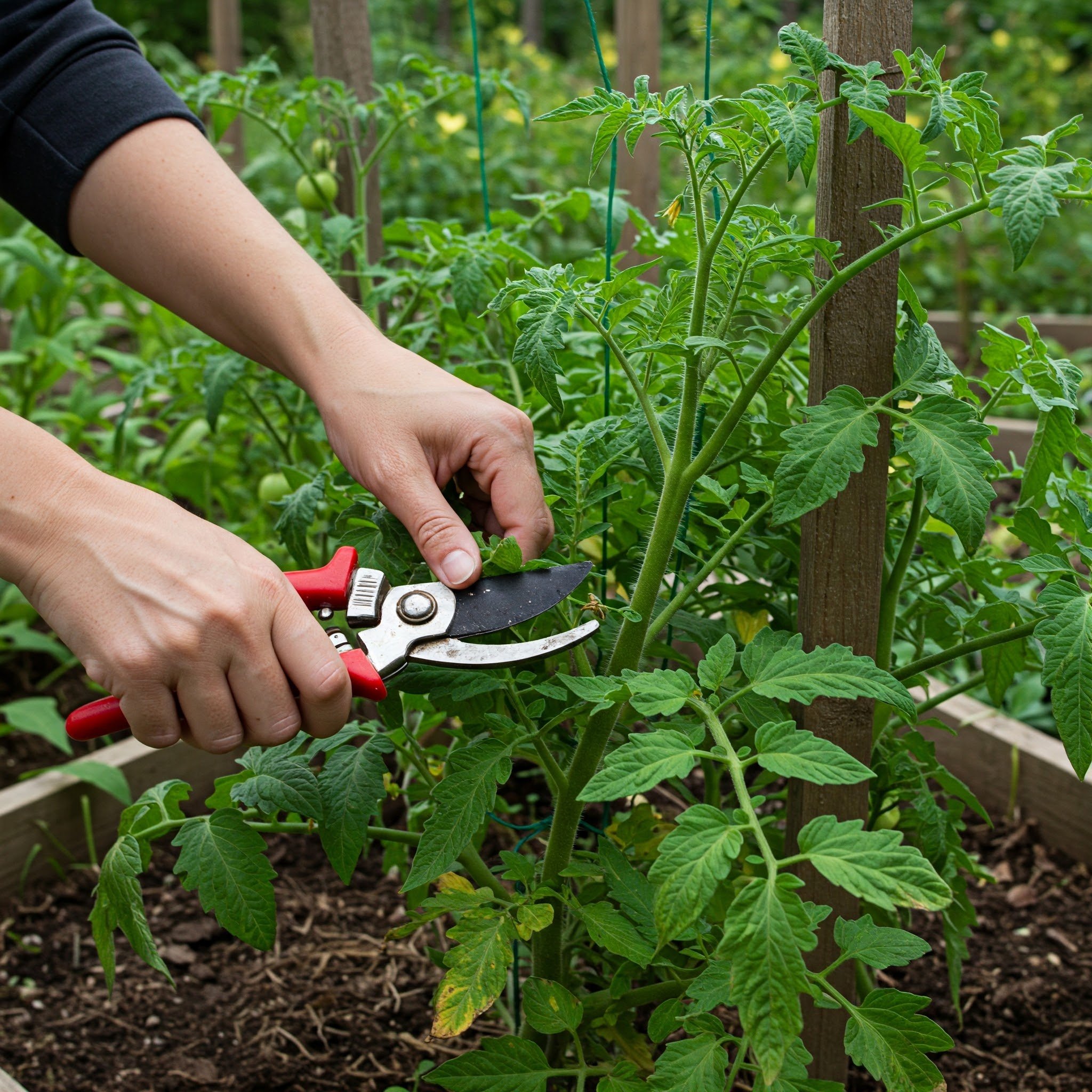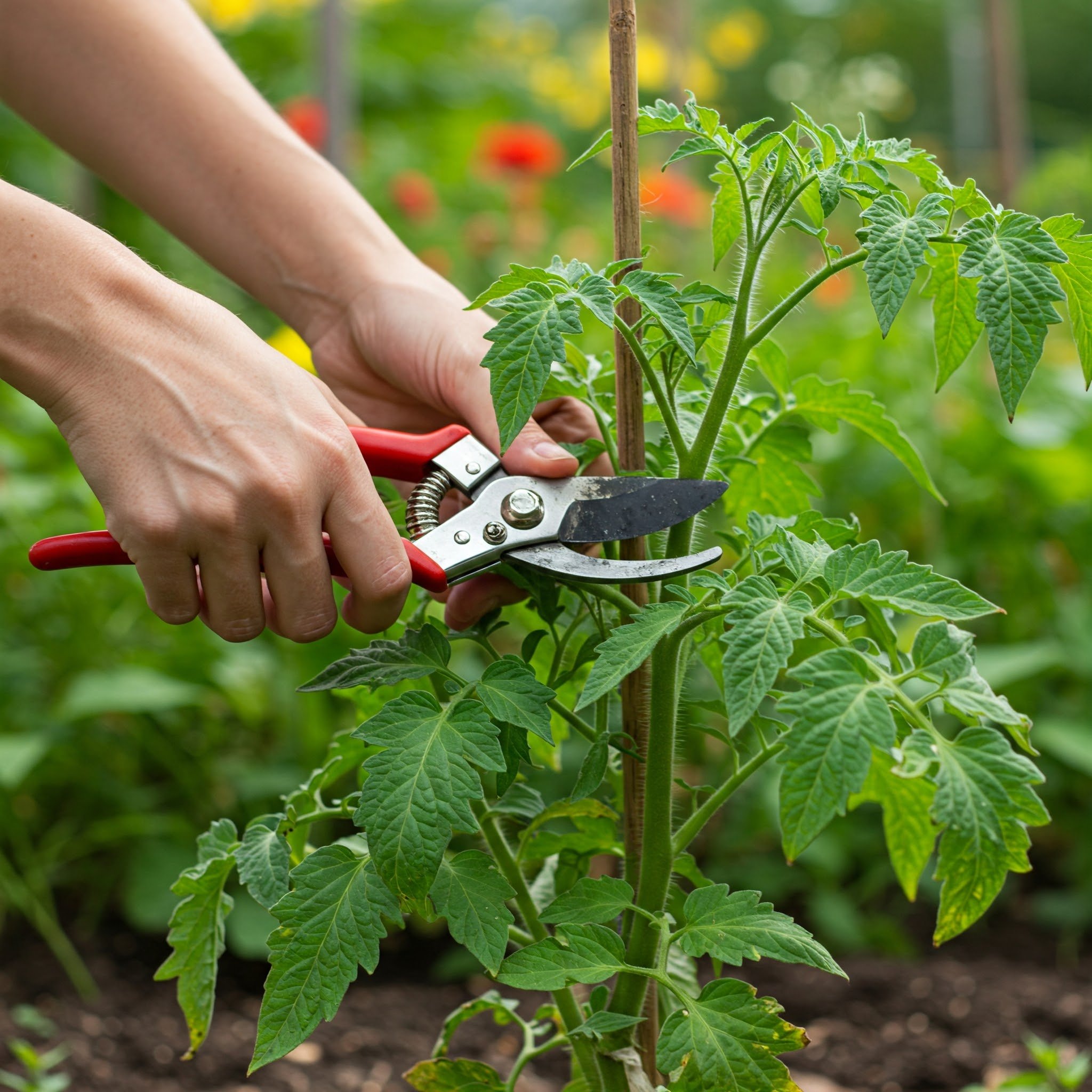How to Prune Tomato Plants for Bigger Harvests
Discover the ultimate guide on How to Prune Tomato Plants for Bigger Harvests! Learn creative techniques, insider tips, and step-by-step instructions to boost your tomato yield and enjoy a thriving garden all season long.
Ever wondered how a few snips here and there could turn your modest tomato patch into a fruit-laden paradise? Well, buckle up because we’re diving into the world of tomato pruning—a practice that might just revolutionize your garden. In this article, we’re exploring How to Prune Tomato Plants for Bigger Harvests in a way that’s fun, engaging, and totally down-to-earth. Whether you're a seasoned gardener or just dipping your toes into the world of homegrown veggies, this guide is packed with practical advice, quirky insights, and plenty of real-talk to help you get those tomatoes plump and juicy.
Tomato plants can be a bit like that unruly teenager—you know they have potential, but they need a bit of guidance to flourish. With the right pruning techniques, you can steer your plants towards a healthier, more productive life. And let’s be honest, who doesn’t love the idea of a bigger, better harvest without a lot of extra fuss?
In the following sections, we'll break down the art and science of pruning, share a step-by-step guide, and even answer some of your most pressing questions about tomato care. So grab your pruning shears, and let’s get started on this green-thumb journey!
Understanding Tomato Plant Growth
Before you start snipping away, it's essential to understand how tomato plants grow. Think of your tomato plant as a natural architect, constantly building new branches and leaves. Here are some quick insights to keep in mind:
Indeterminate vs. Determinate:
Indeterminate varieties keep growing and producing fruit throughout the season, making them the ideal candidates for pruning.
Determinate varieties grow to a set height and produce fruit in a concentrated burst. These typically need less pruning.
Suckers:
These are the little offshoots that appear in the joint between the main stem and a branch. While they can eventually develop into fruitful branches, they also siphon off energy from the main plant if left unchecked.
Understanding these basics helps you see why How to Prune Tomato Plants for Bigger Harvests isn’t just about cutting off dead leaves—it’s about strategically shaping your plant to maximize fruit production.
Why Pruning Matters: The Benefits of a Well-Trained Tomato Plant
Let’s face it: no one likes a messy workspace, and your garden is no exception. Pruning is like tidying up your tomato plants, giving them the breathing room they need to perform at their best. Here are some key benefits:
Enhanced Air Circulation:
Trimming excess foliage helps prevent fungal diseases by ensuring that air can flow freely around your plant.Better Sunlight Exposure:
By removing overcrowded growth, more sunlight reaches the fruit-bearing sections, leading to more vibrant and evenly ripened tomatoes.
Energy Redirection:
Cutting away unnecessary growth lets the plant channel its energy into producing larger, tastier tomatoes.Easier Harvest:
A well-pruned plant is not only more attractive but also easier to manage and harvest.
Remember, the ultimate goal here is simple: knowing How to Prune Tomato Plants for Bigger Harvests can mean the difference between a decent yield and a bumper crop.
Mastering How to Prune Tomato Plants for Bigger Harvests: Step-by-Step Guide
Ready to transform your tomato plants into a prize-winning display of lush, productive beauty? Follow these steps and you’ll soon be reaping the rewards.
Step 1: Gather Your Tools and Get Ready
Before you get started, make sure you have the right tools in hand:
Sharp Pruning Shears:
Ensure your shears are clean and sharp to make clean cuts.Gloves:
Protect your hands from scratches and sap.Disinfectant:
Use rubbing alcohol to sterilize your shears between cuts, especially if you’re working with multiple plants.
Having your tools ready is half the battle won—so don’t skimp on this prep work!
Step 2: Identify the Suckers
Suckers are those pesky little shoots that sprout from the joint between the main stem and a branch. Here’s what you should do:
Spot Them Early:
As soon as you see a sucker, it’s time to act.Pinch or Cut:
You can either pinch them off with your fingers (if they’re small) or use your shears for a cleaner cut. Remember, consistency is key.Monitor Growth:
Keep an eye on your plants regularly to catch new suckers before they get out of hand.
Step 3: Prune for Air and Light
Focus on creating space between the remaining branches. This is how you do it:
Selective Removal:
Cut away any leaves that crowd the center of the plant.Balance is Best:
Don’t go overboard—leave enough foliage to support the plant’s natural functions.Angle the Cuts:
Make your cuts at a slight angle to promote faster healing.
Step 4: Maintenance Pruning
Once your tomato plant is in shape, ongoing maintenance is crucial. Here are a few tips to keep it in top form:
Regular Check-ups:
Inspect your plant every few days, especially during the peak growing season.Seasonal Pruning:
Adjust your pruning frequency based on the growth stage—more frequent in summer, and less so in cooler months.Clean Up:
Remove any dead or yellowing leaves to reduce the risk of disease.
Step 5: Enjoy the Harvest!
After your diligent pruning, your tomato plants will reward you with bountiful, luscious fruits. Enjoy the fruits of your labor—literally! And remember, a little extra care goes a long way in maintaining a thriving garden.
Tools and Safety Tips: Keeping It Sharp and Safe
While pruning may seem straightforward, a few additional pointers can help you avoid common pitfalls:
Sanitize Your Tools:
Regularly clean your shears to prevent the spread of diseases between plants.Work in Good Light:
Always prune in daylight to ensure you don’t miss any hidden suckers or problematic spots.Wear Protective Gear:
Gloves aren’t just for show—they protect your hands from cuts and the plant’s natural irritants.Don’t Rush:
Take your time; precision is key to ensuring healthy regrowth.
Following these simple guidelines will make your gardening session not only productive but also enjoyable and safe.
How to Prune Tomato Plants for Bigger Harvests: Tips, Tricks, and Insider Secrets
Gardening isn’t just a hobby; it’s a passion that thrives on a mix of science, art, and a bit of trial and error. And when it comes to tomatoes, there are a few insider secrets that can make all the difference.
Insider Secret #1: Timing Is Everything
Early Bird Advantage:
Start pruning when the plants are young. This early intervention helps shape the plant and prevents overcrowding later.Regular Maintenance:
Keep up with pruning throughout the growing season to ensure optimal performance.
Insider Secret #2: Know Your Tomato Variety
Variety Matters:
Different tomato varieties have different pruning needs. Do a bit of homework on your specific type to tailor your approach.Indeterminate vs. Determinate:
As mentioned earlier, indeterminate varieties benefit the most from regular pruning.
Insider Secret #3: Monitor for Pests and Disease
Visual Checks:
Keep a watchful eye for signs of pests or diseases. Early detection can save your plants from serious harm.Natural Remedies:
Sometimes, a simple spray of water with a drop of dish soap can keep most pests at bay.
Common Mistakes and How to Avoid Them
Even the most experienced gardeners can slip up now and then. Here are some frequent mistakes—and how to steer clear of them:
Mistake 1: Over-Pruning
The Pitfall:
Removing too much foliage can starve your plant of the energy it needs to produce fruit.The Fix:
Always leave a healthy amount of leaves. Think of it as trimming a bonsai—less is more!
Mistake 2: Ignoring Sanitation
The Pitfall:
Using dirty tools can spread diseases from one plant to another.The Fix:
Make it a habit to sanitize your shears before and after each session.
Mistake 3: Pruning at the Wrong Time
The Pitfall:
Pruning during a cold snap or when the plant is under stress can do more harm than good.The Fix:
Choose a warm, sunny day for your pruning sessions to ensure quick recovery.
Embracing the Art of Pruning: A Labor of Love
Gardening, much like life, is a continuous journey of learning, experimenting, and sometimes making mistakes. Pruning your tomato plants isn’t merely a chore—it’s a ritual that connects you with nature and lets you shape your little green world. Every snip is a step toward a more vibrant, healthy garden, and every trimmed branch paves the way for a bigger, better harvest.
Imagine a warm, breezy afternoon spent in your garden, the sun casting playful shadows on the ground as you carefully trim your tomato plants. It’s moments like these—simple yet profoundly satisfying—that remind you why you fell in love with gardening in the first place. And hey, isn’t it kind of amazing that a little bit of pruning can unlock such potential in your plants?
So, whether you’re a newbie learning the ropes or a seasoned pro looking to refine your techniques, remember that How to Prune Tomato Plants for Bigger Harvests is not just about maintenance—it’s about nurturing growth and embracing the unpredictability of nature. With each cut, you’re not only guiding your tomato plants to produce more fruit but also cultivating a sense of calm and fulfillment that only a thriving garden can provide.
Conclusion
In the grand scheme of gardening, pruning is the unsung hero that can transform a mediocre tomato plant into a fruit powerhouse. The art of trimming isn’t about perfection—it’s about finding that sweet spot where the plant has enough leaves to sustain itself and enough open space to let sunlight work its magic.
By following the steps and tips outlined in this guide, you’re well on your way to mastering How to Prune Tomato Plants for Bigger Harvests. With a bit of practice, patience, and a dash of creativity, you’ll soon be enjoying a garden brimming with delicious, homegrown tomatoes that are as satisfying to eat as they are beautiful to look at.
To sum it all up:
Be proactive: Start pruning early and keep a regular schedule.
Be precise: Use the right tools and make careful cuts.
Be observant: Monitor your plants for signs of stress, pests, or disease, and adjust your care accordingly.
Remember, gardening is as much about the journey as it is about the destination. Every pruning session, every thoughtful snip, is a step toward creating a garden that’s not only productive but also a joy to nurture.
So go ahead, give those tomato plants a little trim, and watch as your garden transforms into a lush, bountiful haven. With the right approach, you’ll soon discover that the secret to a bigger harvest lies in the careful balance of art and science—and a whole lot of love for your plants.
Happy pruning, and here’s to a season filled with juicy, mouthwatering tomatoes!
Read next: Why Are Your Tomato Leaves Curling? Causes and Fixes
Frequently Asked Questions
Q: How often should I prune my tomato plants?
A: Generally, it’s best to prune regularly—about once every week or two during the growing season. However, keep an eye on your plants; if you notice excessive growth or crowding, it might be time for a trim.
Q: Can I prune determinate tomato varieties?
A: While determinate varieties don’t require as much pruning as indeterminate ones, a light trim to remove dead or yellowing leaves can still be beneficial.
Q: What’s the best time of day to prune my tomato plants?
A: Early morning or late afternoon is ideal. Working in cooler temperatures helps reduce stress on the plant.
Q: How do I know if I’m over-pruning my tomato plants?
A: If your plant looks sparse and isn’t producing as many tomatoes as expected, you might be cutting away too much foliage. Aim for a balanced approach.
Q: Do I need to sterilize my pruning tools?
A: Absolutely! Keeping your tools clean prevents the spread of disease, so it’s a must every time you prune.










